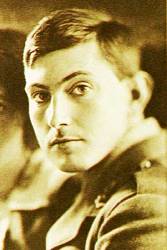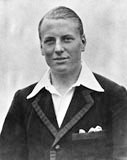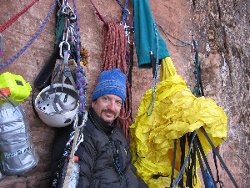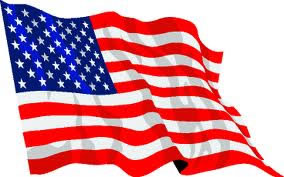
Left: George Mallory and Andrew Irvine © RGS/The Sandy Irvine Trust, from "Ghosts of Everest" ; Right: 1924 North Face locations © Pete
| Photoanalysis | Routes & Maps | Video & Books | Contact Me |


"I'm quite doubtful if I shall be fit enough. But again I wonder if the monsoon will give us a chance. I don't want to get caught, but our three-day scheme from the Chang La will give the monsoon a good chance. We shall be going up again the day after tomorrow. Six days to the top from this camp!"
--from George Mallory's last letter to his wife prior to disappearing on Mt. Everest with his partner Andrew "Sandy" Irvine in 1924
"My face is in perfect agony. Have prepared two oxygen apparatus for our start tomorrow morning".
- Sandy Irvine's last diary entry

About Me
 Celebrating my 50th birthday on pitch 3 of Prodigal
Son, Zion National Park, Utah (guided, all I did was jug up the ropes!)
Celebrating my 50th birthday on pitch 3 of Prodigal
Son, Zion National Park, Utah (guided, all I did was jug up the ropes!)
I am an Emeritus Professor of Chemistry at Western Oregon University where I taught for 31 years.

History of Mount Everest from 1903 - 1975 (copyright © 2005-2023)
Reference: "Everest" 3rd ed, by Walt Unsworth
Page 1 Page 2 Page 3 Page 4 Page 5 Page 6
1963: American Expedition with Norman Dyhrenfurth as leader and including A. Auten, Barry Bishop, Jake Breitenbach, J. Corbet, D. Dingman, D. Doody, R. Emerson, Tom Hornbein, Lute Jerstad, J. Lester, Willi Unsoeld, and Jim Whittaker. A huge expedition, costing almost $400,000 and supported by the National Geographic Society, over 900 porters carry 29 tons of food and equipment to the base of the mountain. Base Camp is established at the foot of the Khumbu Icefall on Mar 21 and the route through the icefall prepared soon after. Jake Breitenbach is killed by collapsing seracs in the Icefall but the expedition continues. The expedition splits into two parties - the West Ridgers and the South Collers.
First Assault: May 1 From Camp 6 at 27,450 feet (8370 meters) on the SE Ridge, Jim Whittaker and Sherpa Nawang Gombu reach the summit in strong winds at 1 PM. Whittaker becomes the first American to summit Everest.
Second Assault: After a tent at Camp 4W - including occupants - is nearly blown off the West Shoulder by hurricane force winds, Camp 5W is placed in the Hornbien Couloir at the foot of the Yellow Band at 27,250 feet (8300 meters). Tom Hornbein and Willi Unsoeld squeeze their way through the couloir and ascend a 60 foot (20 meter) headwall before emerging onto the upper summit pyramid at 27,900 feet (8500 meters). The pair then traverse across to the West Ridge proper, reaching the summit at 6:15 PM. They are forced to descend the SE Ridge where they meet Jerstad and Bishop who had summited at 3:30 PM. The four men descend to around 28,000 feet (8500 meters) before having to bivouac for the night on the ridge proper. They survive a long, cold night out in the open and descend safely to the South Col the next day. Unsoeld later loses most of his toes to frostbite. The first new route and the first traverse of Everest.
1965: Third Indian Expedition, with Commander M.S Kohli as leader. On May 20, 1965 they succeed when A.S. Cheema and Sherpa Nawang Gombu ascend the SE Ridge. Gombu becomes the first person to summit Everest twice (the 11th and 17th summit). Out of the first seventeen summits of Everest, Nawang had two of them! Additional summits were achieved by Sonam Gyatso, Sonam Wangyal, C.P. Vohra, Ang Kami, H.P.S. Ahluwalia, H.C.S. Rawat, and Phu Dorje.
1966-1969: Nepal is closed to mountaineering during this politically tense period involving antagonists India and China.
1969: Japanese SW Face Reconnaissance Expeditions. In the Spring, a party including Naomi Uemura enters the Western Cwm and probes the lower slopes. The Japanese return in the autumn with Uemura and Masatsugu Konishi, and the route is pushed up the Central Gully to the base of the Rock Band before the expedition returns home, convinced that a full-scale expedition could succeed.
1970: Japanese SW Face Expedition led by the seventy-year old veteran Saburo Matsukata. A massive expedition with 39 climbers, seventy-seven Sherpas and a woman, Setsuko Watanabe. Unable to improve on the previous year's reconnaissance efforts due to poor snow conditions and rockfall, the expedition switches to the standard South Col route. Teruo Matsuura and Naomi Uemura reach the summit on May 11, followed by K. Hirabayashi and Chottare Sherpa on the next day. Watanabe sets an altitude record for women by climbing to the South Col.
1970: Japanese Ski Expedition. Climbing along with the SW Face expedition, Yuichiro Miura skis from the South Col to the bottom of the Lhotse Face on May 6. Reaching speeds of 100 mph (160 kph), Miura slows himself with a parachute but loses control after hitting some rocks. He slides unconscious about 600 feet (200 meters) down the icy slopes, and fortunately stops just short of a huge crevasse.
1971: International Expedition. Norman Dyhrenfurth leads an expedition with thirty climbers from thirteen different countries including Don Whillans, Dougal Haston, Naomi Uemura, Pierre Mazeaud, and H. Bahuguna. This optimistic expedition hopes to simultaneously climb the SW Face and the West Ridge Direct, but is fraught with one- upsmanship, personality conflicts, and organizational problems. Bahuguna is caught out in a storm at Camp 3W. A rescue party climbs up to help him and he is found clipped onto the fixed ropes, missing a glove, his bare midriff exposed to the storm, and his face coated in ice. When it proves impossible to move him horizontally, they try to lower him vertically into the shelter of a crevasse, but the rope runs out before they can reach it a la Tony Kurtz on the Eiger Nordwald. Whillans utters his famous remark, "Sorry Harsh old son, you've had it." The expedition falters after his death, but Whillans and Haston push the SW Face route to 27,400 feet (8,350 meters) before lack of equipment forces an end to the expedition.
1971: Argentine Post-Monsoon Expedition. A post-monsoon expedition where J. Peterek and U. Vitale reach 26,600 feet (8,100 meters) before being defeated by high winds and an unfavorable weather forecast.
1972: European Expedition to the SW Face led by Dr. Karl Herrligkoffer and including climbers Don Whillans, Doug Scott, Hamish MacInnes, Felix Kuen, Adolf Huber, Werner Haim, and Leo Breitenberger. The expedition is plagued by personality conflicts and the withdrawal of many of the climbers, but the route is pushed as high as 27,200 feet (8,300 meters) before the attempt is abandoned.
1972: British SW Face Expedition led by Chris Bonington including climbers Mick Burke, Nick Estcourt, Dougal Haston, K. Kent, Hamish MacInnes, Tony Tighe, and Doug Scott. A post-monsoon expedition confronted with terrible weather, an elevation of 27,200 feet (8,300 meters) is reached below the Rock Band before retreating. Tragically, Tony Tighe is killed in the Icefall during the descent.
1973: Italian Expedition. Another huge expedition with sixty-four members led by Guido Monzino. Helicopters are used to shuttle equipment past the Khumbu Icefall and one hundred Sherpas are also employed. Eight climbers succeed via the South Col Route, including 16 year old Sambhu Tamang of Nepal. It is later revealed that Sambhu was actually 18. Italian Summiters were Rinaldo Carrel, Mirko Minuzzo, Fabrizio Innamorati, Virginio Epis, and Claudio Benedetti.
1973: Japanese Expedition. Led by Michio Yuasa, this large forty- eight man expedition attempted both the SW Face and South Col route. The SW Face party reaches 27,200 feet (8,300 meters) before giving up. Success is achieved on the South Col route when Hisahi Ishiguro and Yasuo Kato reach the summit, the first post-monsoon success on the mountain.
1974: Spanish Expedition attempts the South Col route. A high camp is placed on the SE Ridge, and twice teams were in position for a summit attempt, but both times are defeated by high winds. The second summit team manages to reach 27,900 feet (8,500 meters) before retreating.
1974: French West Ridge Expedition. Led by Gerald Devouassoux, a post- monsoon attempt to climb the West Ridge Direct starting from the Lho La. Because of political considerations, they don't climb the slopes leading up to the Lho La directly, but start from the base of the Khumbu Icefall; the expedition eventually reaches the West Shoulder by September 9. A major lapse in monitoring weather reports prevents them from learning that an unexpected return of warm monsoon weather is about to occur. The tragic result is that Gerald Devouassoux and five Sherpas are swept away in an immense avalanche, after which the expedition is called off.
1975: Japanese Ladies Expedition led by Mrs Eiko Hisana. On May 16 Junko Tabei of Japan became the first woman to reach the summit via the South-East Ridge.
1975: Chinese Expedition led
by Shih Chan-chun, leader of the 1960 Chinese ascent, and organized by a "Party
Committee" that included Wang Fu-chou, one of the 1960 summiters. A military-style
expedition that uses soldiers to carry supplies to the North Col and siege tactics
to progressively reposition camps higher and higher up the mountain. A final
assault camp is established between the First and Second Steps at 28,500 feet
(8,680 meters) by the Mushroom Rock, and the Second Step is prepared with an
aluminum ladder to overcome the final vertical headwall pitch. A team of nine
climbers - eight
Tibetan and one Chinese - reaches the summit on May 27, including the Tibetan
woman, Phantog. Phantog becomes the second woman to summit Everest, losing this
honor to Junko Tabei by only a few days. She is the first woman to summit from
the Tibetan side.
1975: British SW Face Expedition (post-monsoon). Leader Chris Bonington and including H. MacInnes, Peter Boardman, Martin Boysen, P. Braithwaite, Micke Burke, M. Cheney, C. Clarke, Nick Estcourt, Dougal Haston, and Doug Scott. Base Camp is reached on August 22 and Advance Base is established on September 2. The expedition is blessed with good weather and smooth logistics, resulting in the steady placement of camps up the Central Gully to Camp 5 at 25,500 feet (7800 meters). The Rock Band is ascended via a gully on the left side by Estcourt and Braithwaite, who have some sporty moments when their oxygen runs out on dicey pitches at 27,000 feet (8200 meters). The upper icefield is reached via an awkward outward-sloping ramp; Haston and Scott establish Camp 6 a few days later at an elevation of 27,300 feet (8300 meters). The next day they fix 1,500 feet of rope on the upper snowfield, extending the route towards a gully leading up to the South Summit.
First Assault: Sept 24: Haston and Scott reach the South Summit at 3 PM after 11 hours of climbing. After preparing a snow cave and drinking a brew, they continue on to the summit which they reach at 6 PM. They descend to the South Summit and bivouac in the snowcave. After a freezing, oxygenless night complete with hypoxic conversations with feet, toes, and imaginary companions, the pair descend to Camp 6 safely, passing the second assault party on their way up.
Second Assault: Sept 26: Boardman and Sirdar Pertemba reach the summit and descend in a gathering storm, where they encounter Mick Burke just below the summit. They wait for him as long as possible before descending, but Burke is never seen alive again. He probably made the top but fell off of the heavily corniced summit ridge while descending in the deteriorating conditions.

News
2019 Searches and Evidence that Irvine and the Camera Were Found by the Chinese in 1975?
 Along with Mark Synnott, Thom Pollard was part of the National Geographic 2019 search, as well as a member of the 1999 search that found Mallory's body. I recommend his Facebook page as well as his YouTube channel where he has been producing videos dealing with the new theories that are given below.
Along with Mark Synnott, Thom Pollard was part of the National Geographic 2019 search, as well as a member of the 1999 search that found Mallory's body. I recommend his Facebook page as well as his YouTube channel where he has been producing videos dealing with the new theories that are given below.
After his book "The Third Pole: Mystery, Obsession, and Death on Mount Everest" was published, Synnott uncovered resarch that seems to prove that Irvine and the camera were found by the Chinese back in 1975.
Let's not forget that Jake Norton was on a Discovery Channel search at the same time, but looking in a different place!
There were two films produced about these searches, and you can watch them here: Pollard/Synnott movie "Lost on Everest (Discovery+), and the Norton film Everest's Greatest Mystery (this is an Amazon Prime link, but the movie is available on AppleTV as well).
New Theories
 It has recently come to my attention the theories of Ajay Dandekar, a historian and a faculty member of Shiv Nadar University, Delhi. I find his theory that Irvine stayed behind in a sleeping bag while Mallory went to the summit to be highly questionable. Please see my two part series on why I think this is true: Part 1 and Part 2
It has recently come to my attention the theories of Ajay Dandekar, a historian and a faculty member of Shiv Nadar University, Delhi. I find his theory that Irvine stayed behind in a sleeping bag while Mallory went to the summit to be highly questionable. Please see my two part series on why I think this is true: Part 1 and Part 2
 He's been around for awhile, but you'll want to read Michael Tracy's thoughts of what happened to Mallory and Irvine, along with his repository of YouTube videos. He's very mercurial and you'll need a thick hide if you debate him!
He's been around for awhile, but you'll want to read Michael Tracy's thoughts of what happened to Mallory and Irvine, along with his repository of YouTube videos. He's very mercurial and you'll need a thick hide if you debate him!
New Mallory and Irvine Forum hosted by Jake Norton
 Please visit and become a member of Jake Norton's new Mallory and Irvine forum. You'll want to check out his image-based collection of all of the searches for Irvine from 1999 to 2019. He also has a three part series on his theory of what happened to Mallory and Irvine: part 1, part 2, part 3. And finally, here is the link to his Mallory and Irvine archive.
Please visit and become a member of Jake Norton's new Mallory and Irvine forum. You'll want to check out his image-based collection of all of the searches for Irvine from 1999 to 2019. He also has a three part series on his theory of what happened to Mallory and Irvine: part 1, part 2, part 3. And finally, here is the link to his Mallory and Irvine archive.

Articles and Editorials
A new article by researcher Wim Kohsiek, who has convincingly interpreted the time Mallory's watch was pointing to when it stopped, at odds with Jochen Hemmleb's interpretation that it was pointing to the time of Odell's sighting of the pair at 12:50 pm.
An interview with Graham Hoyland, author of the new book “Last Hours on Everest - The gripping story of Mallory and Irvine's fatal ascent”
Harvey V. Lankford, MD, has written a paper documenting the origin of the term "Glacier Lassitude" as a diagnosis for the debilitating effect of altitude as experienced by members of the early British Everest expeditions.
My new "what if?" theory about Mallory and Irvine's last climb, where I assume Odell's sighting was erroneous, and have them taking the Couloir route instead.
Part 1: the ascent
Part 2: the descent
Warwick Pryce is a new researcher who has arrived on the scene, and he has a new theory about how Andrew Irvine could have been the first person to stand on the top of the world.
Wim Kohsiek has a new interpretation of what Mallory's altimeter can tell us based on scientific applications of meterology.
Mallory and Irvine researcher Wim Kohsiek has two new thought-provoking articles about Mallory's watch and Irvine's location:
Mallory's Watch - Does it Really Point to 12:50 PM?
1924 Oxygen by Richard McQuet and Pete Poston
Why the Camera and Film are not Doomed to Destruction!
The Politics of Mallory and Irvine
Why Andrew Irvine Will Not be Found in a Sleeping Bag! Part 1 and Part 2
Chomolungma Nirvana: The Routes of Mount Everest
Rust Marks on Mallory's Altimeter
Little Known Free-Solo Ascent of the Second Step in 2001 by Theo Fritsche - I should never have written this - Anker and Houlding deserve credit for the first free ascent
Criticisms of the 2004 EverestNews.com search for Irvine --
The Mystery of Mallory and Irvine's Fate (with J. Hemmleb): Part 1, Part 2, Part 3, Part 4, Part 5.
Mallory and Irvine - Comments on the 'real Second Step' route: Part 1 and Part 2
Conrad Anker's comments on the unlikeliness of a direct route up the prow of the 2nd Step
Articles about my heroes Walter Bonatti and Chris Bonington --
Spilling the Beans - Lino Lacedelli's Book "Price of Conquest: Confessions from the First Ascent of K2" Part 1 and Part 2
The Life and Climbs of Chris Bonington, Part 1, Part 2, Part 3, Part 4, Part 5 final - interview
|
Copyright (c) 2004-2022 Pete Poston. All rights reserved. Visitor's Agreement |